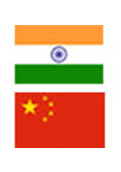Shanghai Cooperation Organization and India
Over the years, the scope of SCO has widened to include the interests of countries beyond the Eurasian space. For India to capitalise on the SCO it must have a clear pro-active policy, otherwise it may risk becoming a focal point of criticism by the Central Asia states like the way India is often targeted by the SAARC members.
- P. Stobdan
- July 14, 2014













